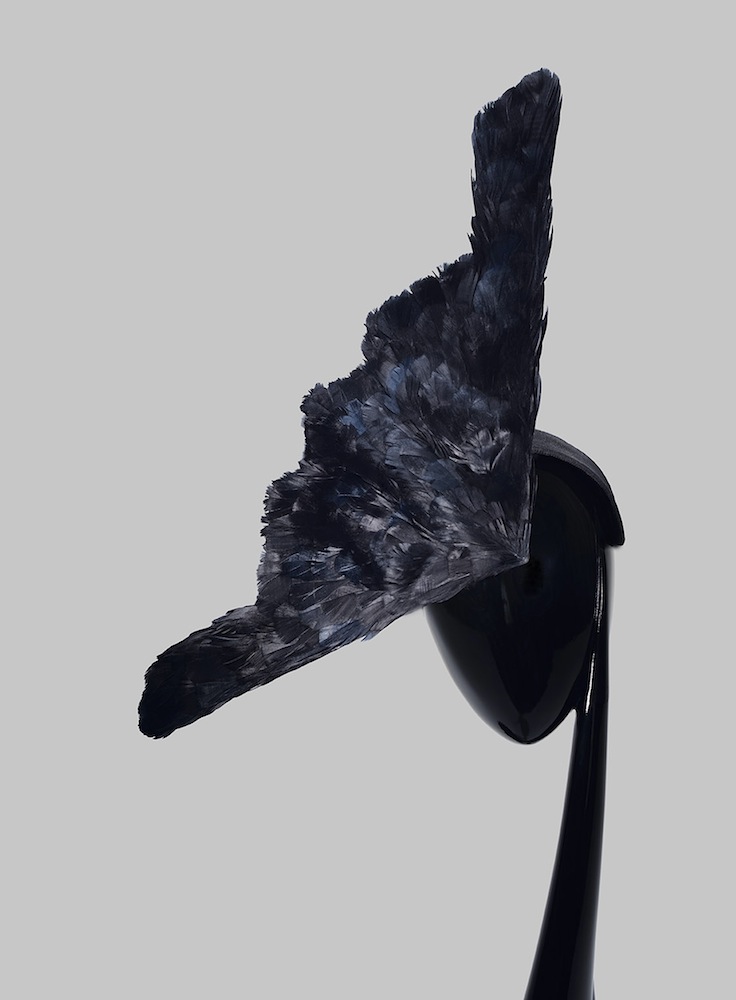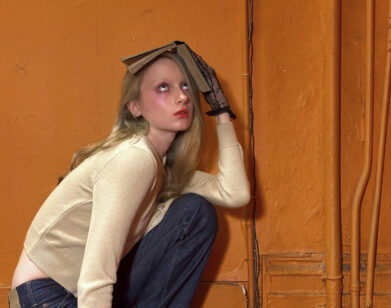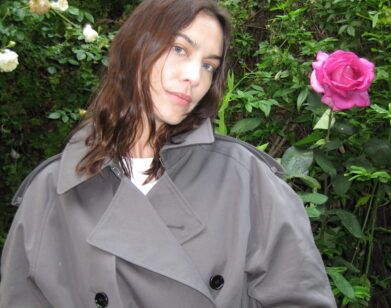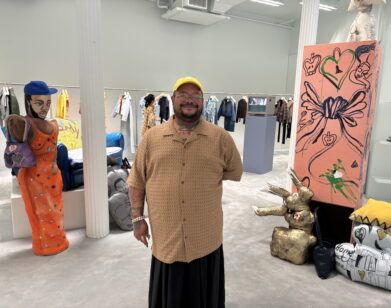How Paris Adorned Its Pastel Paradise
While the wash of the Spring ’14 shows continue to sink into our collective fashion consciousness, it’s more than worth a glance at the niche creators (of the shoes, the bags, the jewels) whose covetable wares will count for equal in-store caché racked alongside the ready-to-wear come February. With a series of presentation and private viewings scattered throughout Paris, local and international talents descend upon galleries and showrooms to exhibit their goods—the scale and significance of which continue to fluctuate with the omnipresent urge for the new that is driving our consumer radars.
One inescapable player is 33-year-old British shoe designer Nicholas Kirkwood, who announced a majority takeover of his nine-year-old business by LVMH this week. Kirkwood showed his sculpted heels in the Galerie Saint Honoré, framed by bold striped vitrines and set off by a mirrored, tilting cube installation by set designer Robert Storey. Known for his vertiginous heel play and mastery of unexpected textiles, his Spring offering was inspired by Moroccan décor and a retro, ’70s palette, with raffia and python taking center stage—cut in geometric strapping and thatched in contrast colors. Exquisite laser-cut leather mimics the intricate mosaic tiles of Marrakech, employed to killer effect in Kirkwood’s statement showpiece: a pair of winding, knee-high gladiators with a golden, pin stiletto heel.
Unbeknownst to many, Belgian label Delvaux is the world’s oldest leather-goods house; it opened its doors in 1829 and has been crafting exquisite ladylike handbags in exotic skins for European royals and their well-heeled friends ever since. Now the secret’s out of the bag and Delvaux’s handmade creations have made their way stateside (both Barney’s and Neiman Marcus are new stockists), with the Spring collection inspired by the crystal-clear tones of Miami’s sandy beaches and the sorbet shades of ’50s automobiles. Their signature “Le Brillant,” from 1958, is reincarnated in degradé saddle leather, and the seductive “Madame” has been cut in pearlescent python and encrusted with mother-of-pearl hardware. With bigger bags seen back on the catwalks, it was a treat to see these craftsmen reveling in the delicate details of their miniature designs, with stingray and crocodile accents rendered in succulent fuchsia and mint green.
Speaking of national treasures, the high jewelry division at Louis Vuitton has been making serious headway of late, with designer Lorenz Baumer spinning the house icons into opulent, abstract creations with some of the world’s rarest and most precious gemstones. Baumer’s latest outing is titled “Chain Attraction” and is a seductive dedication to women of power. He was looking at the antique regalia of long-dead monarchs (mostly of the male variety) whilst conjuring up the giant chain motifs inlaid with Zambian emeralds, Burmese mandarin garnet, and the unusual warm tones of honey-colored moonstones. Onyx and Tahitian peacock pearls furthered the alluring balance of opaque elements that set this collection apart from the turbo-charged sparkle of its competitors, as does the LV-cut diamond—a unique, floral-faceted stone that was four years in the making.
Fendi’s heir apparent Delfina Delettrez has always had a flair for theatrics, having previously paraded her Surrealist-inspired jewels on Marie Antoinette-style busts, striped Roman columns, and clattering factory conveyor belts. For Spring ’14, the designer set up a ghostly banquet table in the Galerie Almine Rech, leaving her quartz and diamond-studded rings, bracelets, and earrings to spin on levitating porcelain plates. She called the series “Never Too Light,” punning on the masculine link bracelets that were fashioned with giant quartz solitaires instead of watch faces. The deep emerald, citrine, and amethyst-colored stones were the season’s biggest news, in an indulgent statement for the woman who (presumably) already has enough time on her hands.
The milliner Stephen Jones is fashion’s ultimate collaborator, having worked behind the scenes with both couturiers and punk’s renegade designers since his beginning on the Blitz club scene in 1980s London. Sometimes, he’ll be the first to admit, those categories collide (we’re talking the Marc Jacobs and John Galliano types), and one could suppose that those most chaotic partnerships give birth to some of his finest work. The ostrich feather plumes he fashioned—in a week, mind you—for Jacobs’ final Louis Vuitton show are a sure testament to that theory. They crowned Jacobs’ black swans in a shower of gothic plumes fit for any mourning princess, anywhere. Call it coincidence or sheer serendipity, but Jones’ eponymous collection for Spring was already signed, sealed, and delivered weeks before and titled “Carte Blanche,” the French saying denoting a “white card” or an offer of complete freedom. With that in mind, Jones let his imagination run wild—crafting berets, headbands, and the like adorned with everything from stealth bombers to swooping ravens. Amongst the countless favorites at his ever-popular Premiere Classe booth was a satellite fascinator—an embossed cube with crystal-studded wings, poised and ready for a most elegant liftoff.







